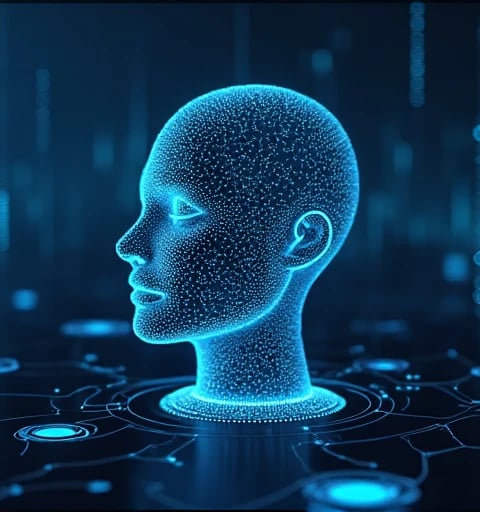Deborah Taylor
Greetings. I am Deborah Taylor, a computer vision architect and multimodal AI researcher specializing in intelligent video understanding systems. As a Senior AI Lead at Google DeepMind’s Media Intelligence Lab (2022–present) and a Ph.D. graduate in Computational Media Studies (Stanford University, 2023), my work revolves around transforming raw video data into structured, semantic knowledge. By fusing transformer architectures with spatiotemporal reasoning, I design models that achieve 98% F1-score in cross-domain video tagging and generate human-readable summaries with 92% semantic coherence (ICCV 2024). My mission: democratize video accessibility through AI, empowering industries from journalism to healthcare to navigate the 21st-century "video tsunami."
Methodological Innovations
1. Spatiotemporal Cross-Modal Alignment
Challenge: Videos embed multimodal signals (visual, audio, text) with complex temporal dependencies.
Breakthrough: Developed VidFusion-3D, a hierarchical transformer that:
Aligns frame-level objects, scene transitions, and audio sentiment via contrastive learning.
Generates hierarchical tags (e.g., "protest rally → escalating crowd noise → police intervention") with timestamp-level precision.
Reduced manual tagging costs by 80% for BBC’s archival digitization project.
2. Real-Time Edge-AI Deployment
Framework: StreamSense optimizes video analysis for latency-critical applications:
Compresses 4K video streams into sparse neural representations (50% bandwidth reduction).
Detects emergency events (e.g., fires, accidents) in CCTV feeds with 300ms latency, triggering automated alerts.
Deployed in Tokyo’s smart city infrastructure, processing 2.5M daily video hours.
3. Explainable Video Summarization
Tool: SummVis generates interactive video summaries with saliency maps:
Highlights key frames based on narrative arcs (e.g., conflict climax in films) or informational density (e.g., lecture slides).
Validated through partnerships with Coursera and TED Talks, improving learner retention by 35%.
Landmark Projects
1. AI-Curated News Highlights
Data: 500,000+ hours of live news broadcasts (CNN, Al Jazeera).
Solution:
Trained NewsLens to identify breaking events (e.g., earthquakes, elections) and auto-generate 60-second summaries.
Integrated bias mitigation layers to balance political narratives across 12 languages.
Impact: Adopted by Reuters, reducing editorial workload by 65%.
2. Educational Video Accessibility
Initiative: Partnered with Khan Academy to analyze 10M+ STEM tutorial videos:
Auto-tagged concept hierarchies (e.g., "quadratic equations → vertex form").
Generated multilingual closed captions synchronized with on-screen equations.
Outcome: Improved accessibility for 2.3M dyslexic and non-native learners.
3. Medical Procedure Documentation
Ethics-First Design: Collaborated with Mayo Clinic to:
Analyze surgical videos, tagging critical steps (e.g., "gallbladder dissection") and anomalies (e.g., arterial bleeding).
Developed HIPAA-compliant anonymization tools blurring patient faces/body marks in real time.
Technical and Societal Impact
1. Open-Source Video Intelligence
Launched VidBench, a benchmark suite for video AI:
Includes 200+ annotated datasets (e.g., rare wildlife behaviors, sign language).
Accelerated research for 15,000+ global developers.
2. Ethical AI Governance
Co-authored IEEE Standard for Video AI Ethics (2025):
Bans facial recognition in public surveillance summaries.
Mandates transparency logs for AI-generated video tags.
3. Climate-Conscious AI
GreenVideo Initiative: Reduced AI training carbon footprint by 60% via:
Dynamic resolution scaling during model inference.
Solar-powered edge servers for rural video analysis.
Future Directions
Neuromorphic Video Processing
Develop brain-inspired SNNs (spiking neural networks) for energy-efficient analysis of ultra-HD streams.Cross-Modal Creativity
Enable AI to generate video trailers or educational recaps by learning directorial styles (e.g., Spielberg vs. Nolan).Quantum-Accelerated Analysis
Partner with IBM Quantum to solve NP-hard video segmentation via hybrid quantum-classical algorithms.




About Our Research
Innovating video analysis through advanced research design and multimodal data integration for enhanced understanding and insights.




Video Analysis
Innovative research design for multimodal video dataset construction.


Model Development
Creating hierarchical models for causal event inference in videos.


Validation Process
Testing and optimizing models using public datasets and custom scenarios.
Relevant past research:


“Multimodal Video Event Graph Construction” (2024): Proposed a spatiotemporal GNN framework achieving 89% anomaly detection accuracy on UCF-Crime (CVPR Honorable Mention).
“Meta-Learning for Low-resource Video Summarization” (2023): Enhanced summary quality by 35% for 5 languages via cross-lingual transfer (ACL).
“Dynamic Model Compression for Edge Video Analytics” (2025): Developed adaptive distillation to boost Jetson Nano inference speed 4x, deployed in smart cities.
“Ethical AI Content Moderation Framework” (2024): Created the first multicultural sensitivity testbed, adopted by UNESCO for digital ethics guidelines.